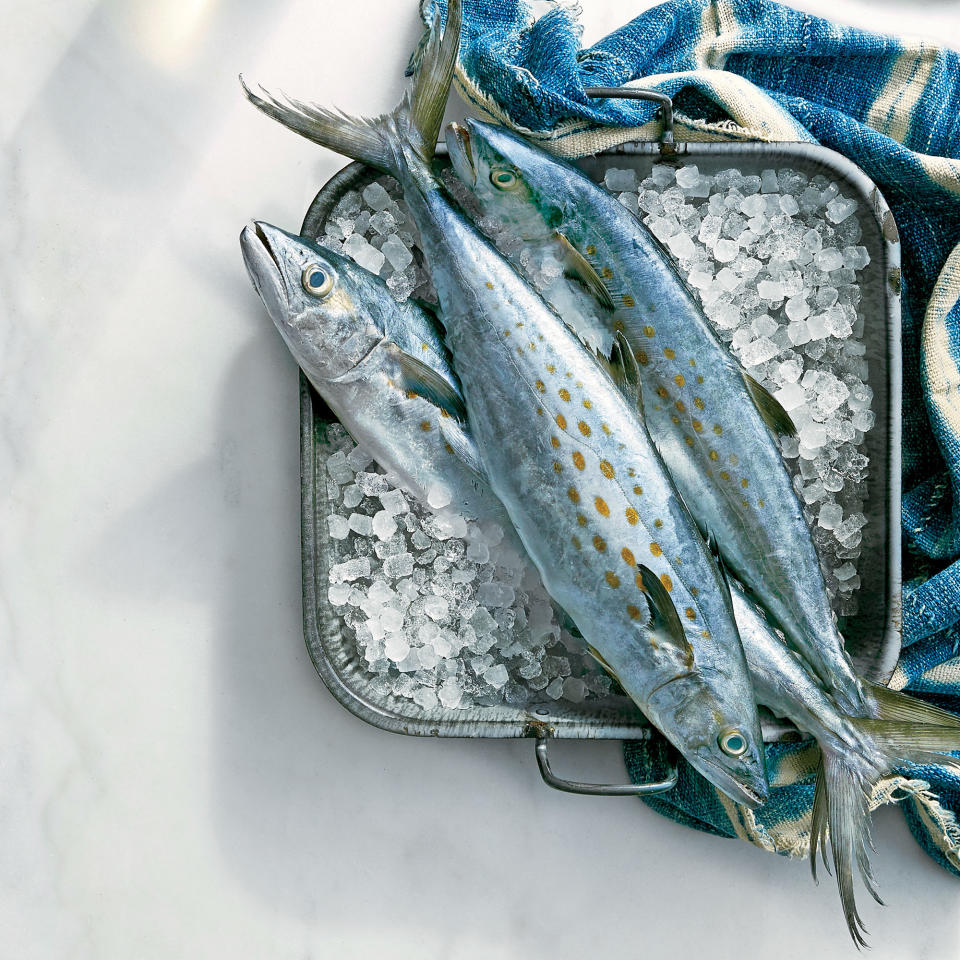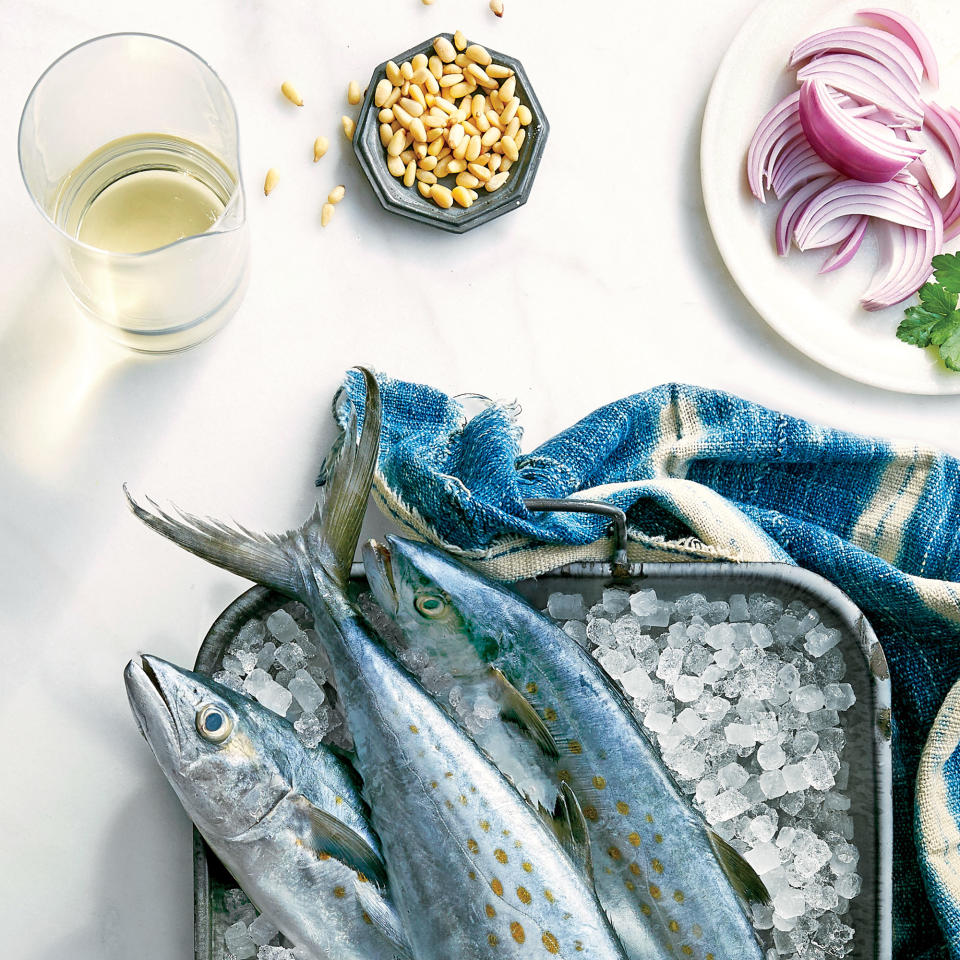How to Master Mackerel
Among the most majestic fish in the seas, mackerel emerge in early summer from their deep-water winter habitat and enter the shallow shoals. Huge schools delight anglers and eaters straight up the Pacific coast and from Maine down through the Gulf. In North Carolina's Outer Banks, for example, a surge of golden-spotted, bullet-shaped Spanish mackerel (pictured here) flick and dart in chase of prey. Head north and you'll find the waters roiling with their more compact brothers-the Atlantic (or Boston) mackerel. There is not a more beautiful fish, with distinguishing tiger stripes of green and iridescent blue.
Mackerel's popularity began to wane as we indulged a preference for meatier, whiter-fleshed fish, but its pinkish-gray fillets, full flavor, and firm but flaky texture deserve a place in the pantheon of great seafood. And to catch one of these beauties is as fun as fishing gets. Notoriously fast swimmers, mackerel move like pucks in a bold game of air hockey, their swift, linear movements nearly impossible to follow.
While I don't consider myself a skilled fisherman, mackerel are one of the few fish that I eagerly pursue from my dock; we eat these a few times a week at our house. If you're not so fortunate to catch a couple yourself, you're still in luck. There is a sustainable wild fishery for all kinds of mackerel on every coast. In the summer months, any good fishmonger can get fresh varieties if given a day's notice.
Though Boston and Spanish mackerel have smaller fillets, whereas king mackerel are larger, all varieties cook similarly and are interchangeable in recipes. Because they're rich in healthy omega-3s, I like them best in preparations that have an acidic component to provide balance. In my recipe for Mackerel en Saor (page 100), I take inspiration from the great sweet-and-sour dishes of Italy, elevating the freshness of the fish and complementing it with the complexity of stewed vegetables, the crunch of pine nuts, and little treasures of sweet raisins throughout (flavors that are also delicious with bluefish or sardines). The key is lots of olive oil, as well as enough time for the fish to marinate. I let it chill overnight, and then allow it to return to room temperature prior to serving-how easy is that? Though it is traditionally served as a cicchetti (appetizer), I like to present it as a main dish. When enjoyed with cold, crisp white wine and charred, toasty bread, it adds a splash of Italian romance to any summer table.
Master Mackerel
Mackerel fillets have a short line of easily removable pin bones. Locate the line with your fingers and simply slice down to the skin, but not through it, on each side of the bones. Then lift the whole strip of bones out with your fingers and discard. Though the texture of mackerel is firm, it's best to cook it with the skin on, to provide structure that will prevent the fillet from falling apart. You can simply peel the skin off after cooking if you prefer your fish without it.
Barton Seaver is a chef, sustainable seafood expert, and National Geographic Explorer, and the author of several books, including Two if by Sea, due out in May.




